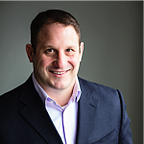How Inflection Points Define The Future
Humans tend to think in a linear fashion. If something is growing, we expect it to keep growing. If it is decreasing, we expect it to continue to decrease. We are natural trend watchers and instinctively look for patterns. Yet it is often the discontinuities, rather than the continuities, that have the biggest impact.
The mathematician Benoit Mandelbrot referred to this cycle of continuity punctuated by discontinuity as “Noah effects and Joseph effects.” Joseph effects, as in the biblical story, support long periods of continuity. Noah effects, on the other hand, are like a big storm creating a massive flood of discontinuity, washing away the previous order.
Throughout history, inflection points have defined the future. Business models, built on top of Joseph effects, are disrupted by Noah effects, creating new opportunities for those who are able to identify and adapt. Today, we’re in the midst of a series of inflection points in what was already a time of enormous flux. We can’t predict the future but we can prepare for it.
1920s: A Second Industrial Revolution
By 1920, electricity was already nearly a 40-year old technology. In 1882, just three years after he had almost literally shocked the world with his revolutionary electric light bulb, Thomas Edison opened his Pearl…
